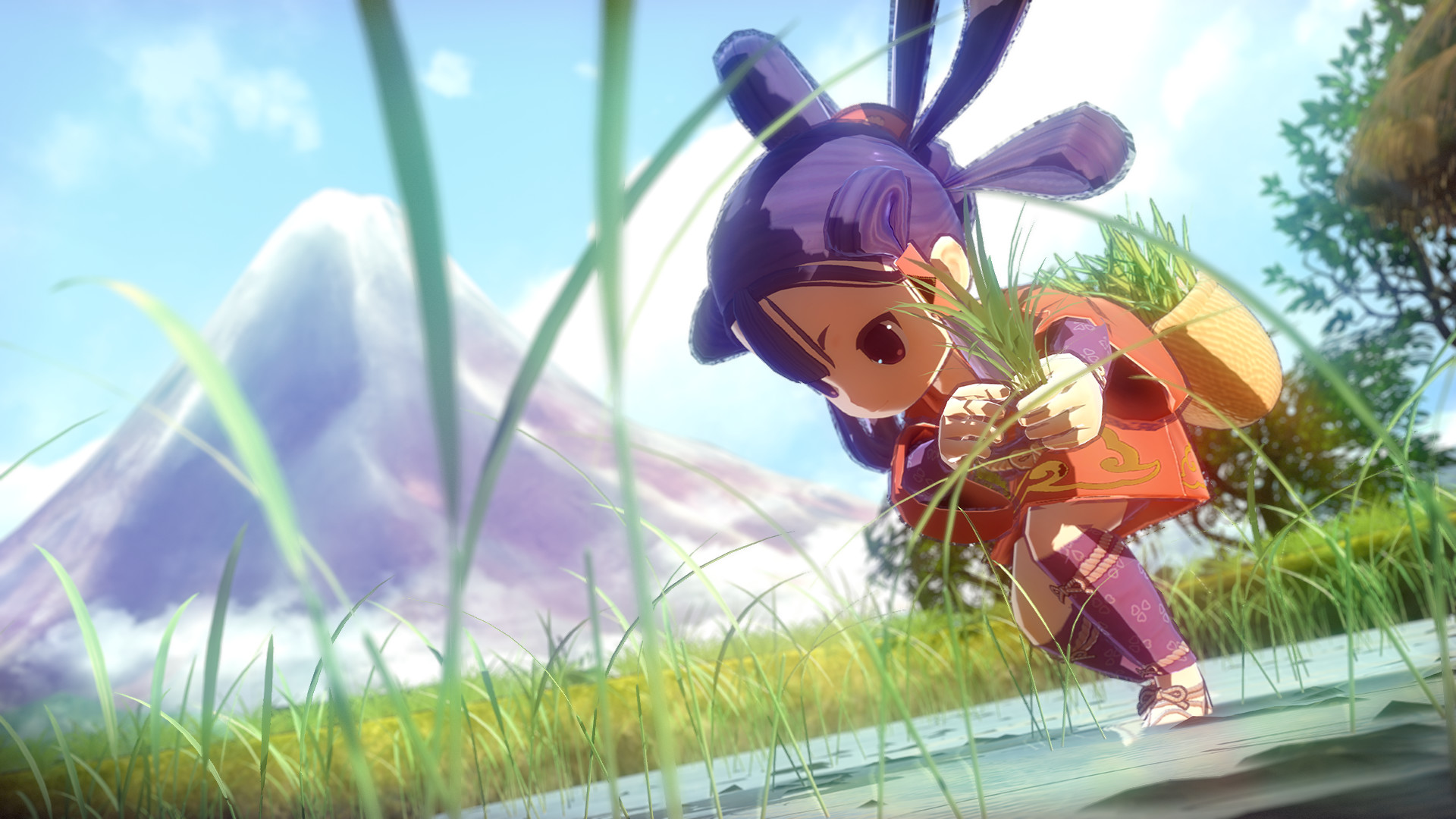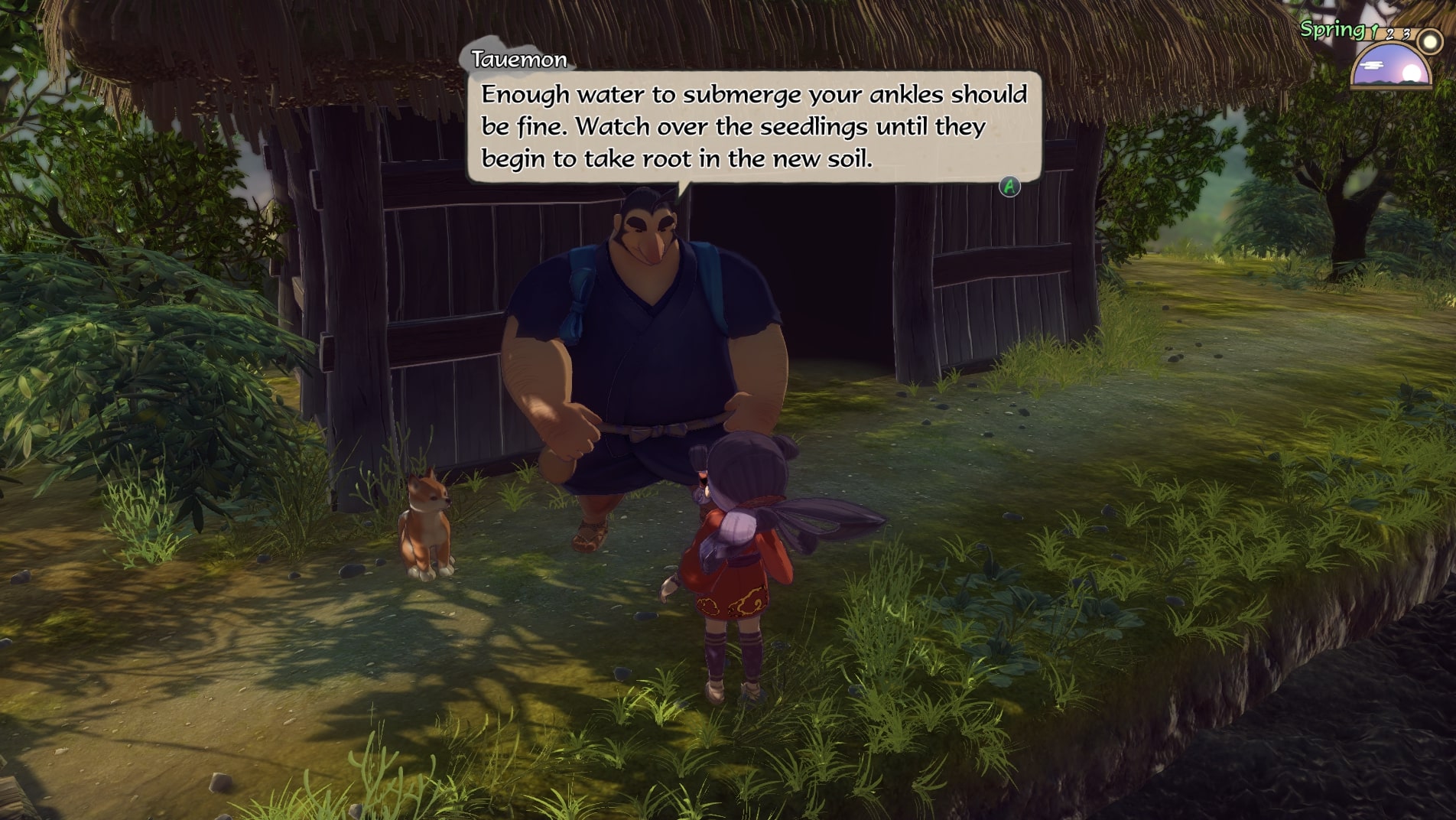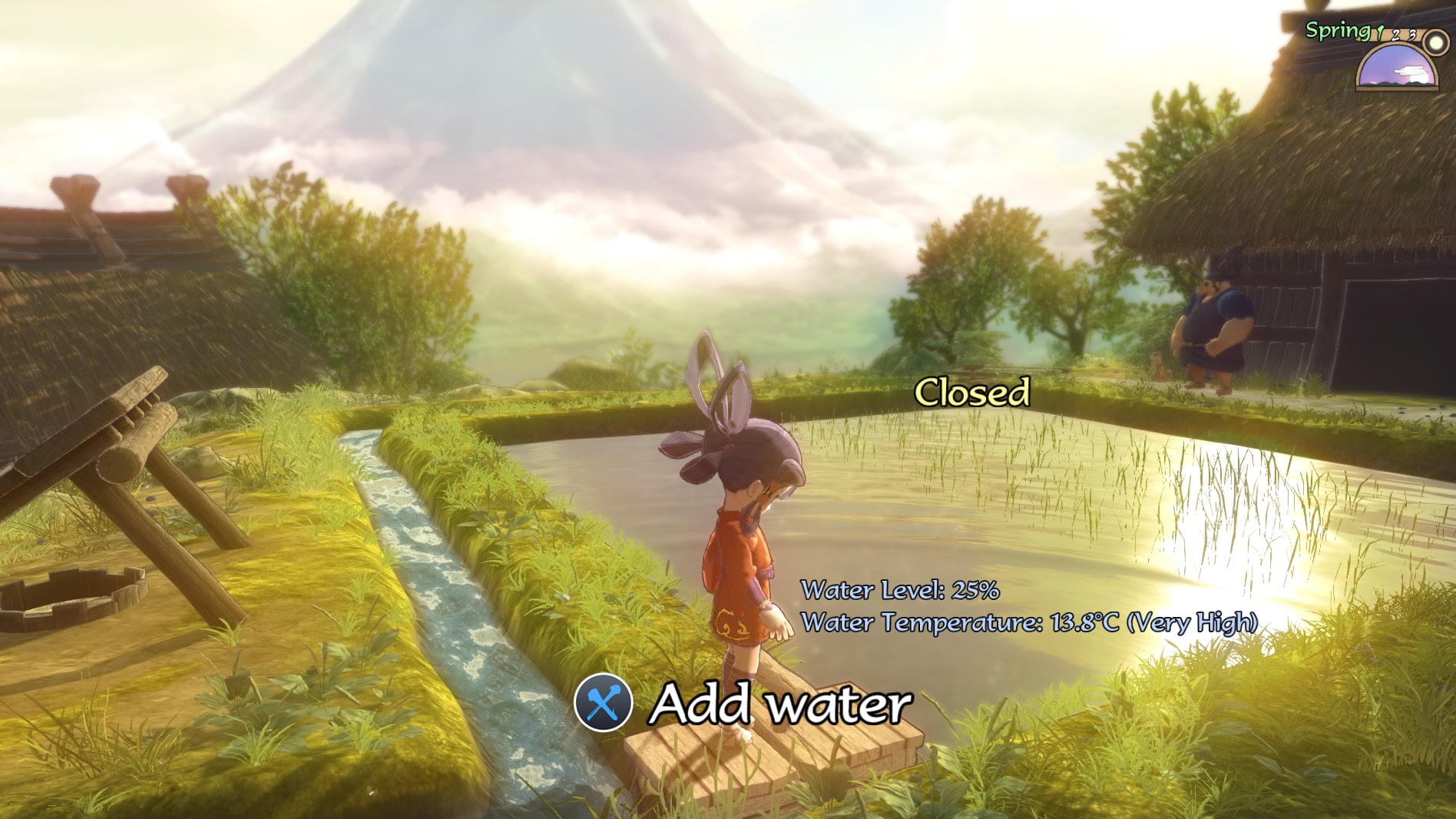Growing crops in Sakuna: Of Rice and Ruin involves some serious hardcore farming
I planted 100 individual seedlings and loved every second.

This article first appeared in PC Gamer magazine issue 354 in March 2021 as part of our 'Why I Love' series. Every month we talk about our favourite characters, mechanics, moments, and concepts in games—and explain why we adore them so much.
It's difficult playing other farming games after you've played Sakuna: of Rice and Ruin. For all the satisfaction I've found in the likes of Stardew Valley, My Time at Portia, Spiritfarer, and Ooblets, I've never been as pleased with any virtual crop I've ever grown as I have in Edelweiss' demon-slaying action game. A side-scrolling brawler crossed with a farming simulator might seem like a weird hybrid, but Sakuna: of Rice and Ruin makes the two work in harmony. It's safe to say that this is the most excited about rice paddies I've ever been in my life.
Sakuna isn't your normal farming game. Sure, Stardew Valley has rice crops, but that's nothing compared to the hardcore rice farming here. It's next level. It's not simply a case of chucking some seeds in the ground and watering them every day—oh no. Growing rice is a delicate process, and even slight adjustments to water and weather could potentially mess with your harvest. Growing those little white grains is serious business.
After being banished to a demon-infested island, Sakuna and her new human family need to grow rice as their main food resource, and it's her job to plant, nurture, and harvest the crops. A day for Sakuna goes along the lines of checking on the paddy, going out to scavenge for resources, and then spending the evening with the family, sharing stories over a hearty meal.
It's a lot to take in at first—Sakuna throws a bundle of graphs and numbers at you thick and fast. But it thankfully breaks it down in a way that makes rice-field maintenance fun and accessible. Through a variety of minigames, Sakuna takes you through every step of rice paddy care, and it doesn't hold back. Your first task is to plant individual seedlings—50 of them for your first harvest—and then throughout the days, you need to keep an eye out for weeds and pests that need removing while topping up the soil with some fresh fertiliser each day. It may sound monotonous, but for me this busywork and preparation has the same feel as organising your party before a dungeon delve, or collecting a bunch of items before a difficult boss fight. But, you know, with less murderous intent.
Farm hand
Nurturing and patience are the way of the humble farmer, and caring about the nitty-gritty details, such as water irrigation, is part of the job. I actually love the water system in Sakuna, which involves flooding the whole paddy and controlling the water flow by opening and closing small gates that connect to a river. During the spring it's important to make sure the seedlings have plenty of water, but then when summer comes by you'll need to switch up your tactics and drain the paddy in what's known as ‘midsummer drying'.
How you grow your rice can also impact what special abilities and fighting skills Sakuna gains
Taking care of the harvest throughout the year, switching up your treatment in different seasons and making small adjustments depending on what the rice crops need is the best part of the game. How you grow your rice can also impact what special abilities and fighting skills Sakuna gains. It's a neat way of tying the farming and fighting together so they don't feel all that isolated from each other.
It's lovely seeing your bumper crop of rice shoots swaying gracefully in the wind, but even at that stage you're far from done. After collecting the crops (again, individually) you'll need to dry the bunches of them overnight. Then begins the threshing process, which means removing the grain from their stalks. Following that, you'll need to hull the grain, an important process where you remove the tough bits of husk. The more you hull, the whiter the rice becomes, which can result in different rice variations (the more you know!). Only after this string of mini-games is complete can you store your rice to eat through the winter—and get ready to repeat the whole process over again in the spring.
Keep up to date with the most important stories and the best deals, as picked by the PC Gamer team.

It sounds like a lot of work, but each mini-game only requires one or two buttons pressed over and over again. Against a beautiful backdrop with soothing music, the time just melts away. I'm only in my third year of rice growing in Sakuna: of Rice and Ruin, but there are so many more techniques that I want to learn. It's a lot to take in at first, but with a few seasons under your belt, you'll be well on your way to a higher plane of rice farming bliss.
Rachel had been bouncing around different gaming websites as a freelancer and staff writer for three years before settling at PC Gamer back in 2019. She mainly writes reviews, previews, and features, but on rare occasions will switch it up with news and guides. When she's not taking hundreds of screenshots of the latest indie darling, you can find her nurturing her parsnip empire in Stardew Valley and planning an axolotl uprising in Minecraft. She loves 'stop and smell the roses' games—her proudest gaming moment being the one time she kept her virtual potted plants alive for over a year.



